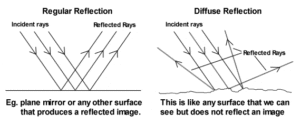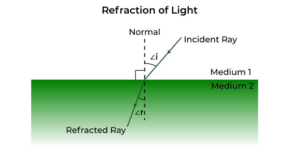WHAT IS TOROID?
Here, we will discuss about toroid in two ways first as per the mathematics and second as per the physics. We will also discuss toroid definition, formula and it’s applications. So let’s get started…
TOROID IN MATHEMATICS
In mathematics, a toroid is nothing but it is a surface of revolution with a hole in its the centre. It is like a doughnut shape, forming a solid body. The axis of revolution passes through the hole (centre of the toroid) and so does not intersect the surface.
When a rectangular strip is rotated around an axis parallel to one it’s edge, then a small circular loop is formed called ring. But if the revolved figure is in circular shape like right circular cylinder, then the object formed is called torus. A torus is a type of toroid.[latexpage]
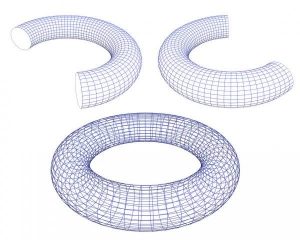
EQUATIONS
Every toroid is specified by its radius of revolution R, which is measured from the center of the cross section rotated. For a symmetrical cross sections volume and surface of the body may be calculated (with circumference C and area A of the cross section).
SQUARE TOROID
If the toroid is square then the volume (V) and surface area (S) of a toroid are given by the following equations, where A is the area of the square section of side, and R is the radius of revolution.
\begin{align*}
V&=2\pi RA\\
S&=2\pi RC
\end{align*}
CIRCULAR TOROID
If the toroid is circular then the volume (V) and surface area (S) of a toroid are given by the following equations, where r is the radius of the circular section, and R is the radius of the overall shape.
\begin{align*}
V&=2\pi ^{2}r^{2}R\\
S&=4\pi ^{2}rR
\end{align*}
TOROID IN PHYSICS
In physics, a toroid is nothing but a solenoid whose both ends are connected. When you bent a solenoid in such a way (in shape of doughnut) that its both end are joined together, then the formed structure is called toroid.
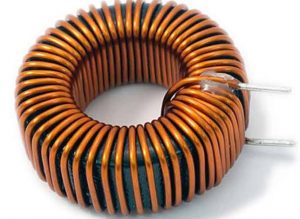
Generally, a toroid is a hollow circular rings on which several turns of copper wire are bounded closely with no space between the two turns. Above figure of toroid is not ideal because it has gaps. See figure above:
We know that solenoid produces magnetic field when an electric current is supplied through the coils. So because a toroid is a circular solenoid then it also produces magnetic field when an electric current is supplied through its coil.
The magnetic field is zero inside and outside of the toroid. Inside the toroid, the magnetic field is along with the circular turn and it is constant in magnitude and its direction is clockwise inside the toroid as per the right-hand thumb rule for circular loops.
The magnetic field due to a toroid can be given as-
$$\boxed{B=\mu_0 nI}$$
Where n is numbers of turns per unit length i.e $\displaystyle{n=\frac{N}{2\pi R}}$. $I$ is the current flowing through the coils and R is the radius of the toroid.
TOROIDAL TRANSFORMER
Transformers are crafted from a couple of solenoids wrapped round a metallic center that is often a ferrite. Toroidal transformers are coils wrapped round a metal, which include a ferrite or silicon steel, that is in doughnut shaped.
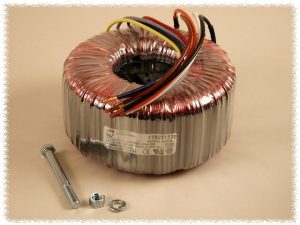
The coils are both wrapped in exclusive regions or positioned one over the other. They are favored for RF or radio frequency transformers, in which they may be used to growth or lower voltages from electricity sources, and to isolate exclusive elements in a circuit. RF transformers also are used for impedance matching, this means that they assist to join input and output elements of various circuits.
ADVANTAGES AND DISADVANTAGES OF TOROID
Toroids have several disadvantages over normal solenoids. Toroids are more difficult to wind and also to tune due to their somewhat complex construction, but they generate the necessary inductances more efficiently. With the same inductance as a normal solenoid, a toroid requires fewer turns and can be made smaller.
Another advantage is that since the magnetic field is confined to the interior, toroidal cores and toroidal transformers can be placed near other electronic components without worrying about undesirable inductive interactions.
USES OF TOROID
Some uses of toroid is listed below:
- Toroids are used in telecommunications
- medical devices
- musical instruments
- amplifiers
- ballasts and more.
A tokamak is a nuclear fusion device that uses a magnetic field to confine the plasma. A plasma is a hot gas that contains electrons and free ions and occurs only at high temperatures. The inclusion of the plasma in a tokamak is done with the use of a torus.
Stay tuned with Laws Of Nature for more useful and interesting content.






